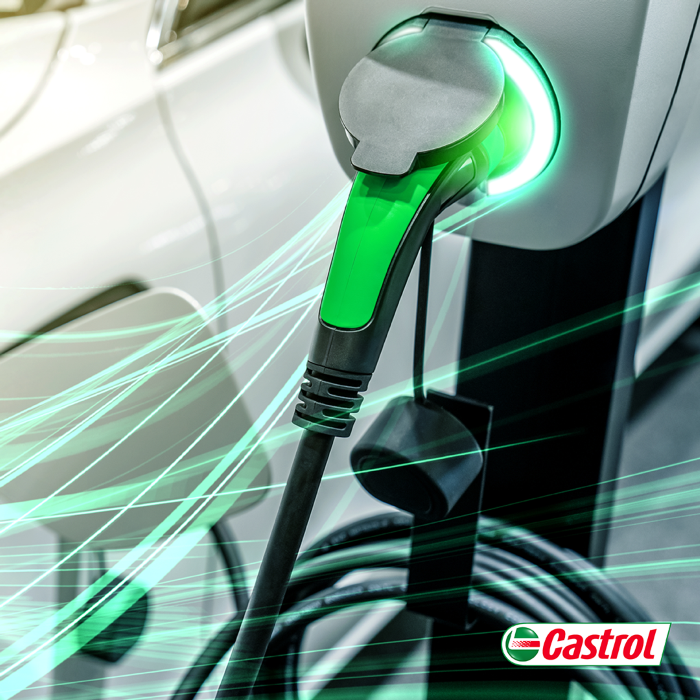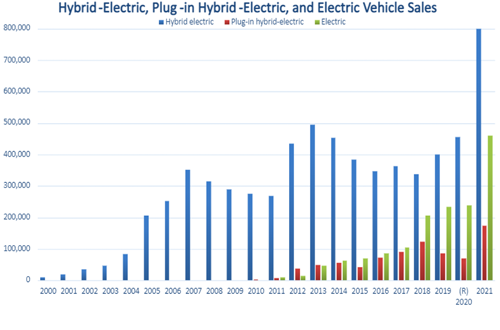
Hybrid electric vehicles are powered by an internal combustion engine and one or more electric motors, which uses energy stored in batteries. A hybrid electric vehicle cannot be plugged in to charge the battery. Instead, the battery is charged through regenerative braking and by the internal combustion engine.
However, All-electric vehicles, also referred to as battery electric vehicles (BEVs), have an electric motor instead of an internal combustion engine. The vehicle uses a large traction battery pack to power the electric motor and must be plugged in to a wall outlet or charging equipment, also called electric vehicle supply equipment (EVSE).
Plug-in hybrid electric vehicles (PHEVs) use batteries to power an electric motor and another fuel, such as gasoline, to power an internal combustion engine (ICE). PHEV batteries can be charged using a wall outlet or charging equipment, by the ICE, or through regenerative braking. The vehicle typically runs on electric power until the battery is depleted, and then the car automatically switches over to use the ICE.
Although the hybrid electric vehicles were first on the market, electric vehicles have quickly gained popularity.

Ref: www.electrek.co

Ref: IEA Analysis, complemented by ACEA, EV Volumes, MarketLine
Castrol is partnering with major manufacturers to ensure its lubricants deliver what drivers want, to go further on a single charge, enable longer life of transmission and components, and ensure long-lasting battery health.
BATTERY COOLANT E-Fluid has advanced properties to enable improved battery thermal management performance, Keeps batteries cooler, even in extreme conditions.
Castrol Dielectric Battery Coolant e-Fluid has a lower viscosity than conventional dielectric coolants, increasing cooling efficiency and protecting batteries against electrical breakdown.
E-TRANSMISSION FLUID. Demand on e-transmissions is more severe than conventional transmissions, with maximum torque delivered at low speeds and the increasing integration of electric motors into the transmission.
Wet Plus Transmission e-Fluid’s specially developed technology, with its optimized friction levels for synchronizer systems and clutches.
Wet Transmission e-Fluid’s low viscosity formulation is specifically developed to deliver low electrical conductivity, enhanced system protection and helps the e-motor run cooler enabling it to operate at high efficiency.
Dry Transmission e-Fluid helps overcome the challenges the drivetrain system faces by providing enhanced protection, reduce viscosity loss and fast release of entrained air.
GREASE E-FLUIDS have a vital role to play in overcoming the challenges that electric vehicle components face during everyday drive.
This article is brought to you by Castrol